
The following change was recently made since the owner's manual was printed:
• Limit switch changed.
Aside from this information, all other content in the owner's manual applies and MUST be read and under-
stood for your own safety. IMPORTANT: Keep this update with the owner's manual for future reference.
For questions or help, contact our Tech Support at (570) 546-9663 or [email protected].
READ THIS FIRST
For questions or help with this product contact Tech Support at (570) 546-9663 or techsupport@grizzly.com
Model G0634X
***IMPORTANT UPDATE***
For Machines Mfd. Since 04/23
and Owner's Manual Revised 04/22
COPYRIGHT © DECEMBER, 2022 BY GRIZZLY INDUSTRIAL, INC.
WARNING: NO PORTION OF THIS MANUAL MAY BE REPRODUCED IN ANY SHAPE
OR FORM WITHOUT THE WRITTEN APPROVAL OF GRIZZLY INDUSTRIAL, INC.
#CS22560 PRINTED IN TAIWAN
Revised Parts
514V2
REF PART # DESCRIPTION
514V2 P0634X514V2 LIMIT SWITCH AUSPICIOUS AZ-9111 V2.04.23

-2- READ ELECTRICAL SAFETY
ON PAGE 53 OF OWNER'S
MANUAL!
Model G0634X (Mfd. Since 04/23)
(Replaces Page 54 in Owner's Manual)
A
B
AMP
RESET
96 98
1/2
T1/2 T3/6 NO14
ON
3/4
T2/4
L1/1 L3/5 NO13
L2/3
5/6
95
18
22
26
RESET
NC21
SDE
NC22
Ground
Ground
Hot
14
13
12
11
G
X
Y
Hot
NC
NO
3
4
21
MA-18
AUSPICIOUS AZ-9111
LIMIT SWITCH
EMERGENCY STOP
BUTTON
AS600 10A250VAC
SDE MP-18
MAGNETIC SWITCH
220V MOTOR
Start
Capacitor
400MFD 125VAC
Run
Capacitor
50uF 350VAC
220 VAC
L6-30 PLUG
(as recommended)
Contactor
OL Relay
RA-30
Wiring Diagram

-3-
READ ELECTRICAL SAFETY
ON PAGE 53 OF OWNER'S
MANUAL!
Model G0634X (Mfd. Since 04/23)
(Replaces Page 55 in Owner's Manual)
Electrical Component Photos
Figure 79. Magnetic switch.
Figure 81. Start capacitor.
Figure 82. Run capacitor.
Figure 83. Jointer table limit switch.
Figure 80. Emergency Stop button.


COPYRIGHT © APRIL, 2007 BY GRIZZLY INDUSTRIAL, INC., REVISED APRIL, 2022 (CS)
WARNING: NO PORTION OF THIS MANUAL MAY BE REPRODUCED IN ANY SHAPE
OR FORM WITHOUT THE WRITTEN APPROVAL OF GRIZZLY INDUSTRIAL, INC.
#BL8977 PRINTED IN TAIWAN V5.04.22
MODEL G0634X
12" JOINTER/PLANER
W/V-HELICAL CUTTERHEAD
OWNER'S MANUAL
(For models manufactured since 11/20)
***Keep for Future Reference***

This manual provides critical safety instructions on the proper setup,
operation, maintenance, and service of this machine/tool. Save this
document, refer to it often, and use it to instruct other operators.
Failure to read, understand and follow the instructions in this manual
may result in fire or serious personal injury—including amputation,
electrocution, or death.
The owner of this machine/tool is solely responsible for its safe use.
This responsibility includes but is not limited to proper installation in
a safe environment, personnel training and usage authorization,
proper inspection and maintenance, manual availability and compre-
hension, application of safety devices, cutting/sanding/grinding tool
integrity, and the usage of personal protective equipment.
The manufacturer will not be held liable for injury or property damage
from negligence, improper training, machine modifications or misuse.
Some dust created by power sanding, sawing, grinding, drilling, and
other construction activities contains chemicals known to the State
of California to cause cancer, birth defects or other reproductive
harm. Some examples of these chemicals are:
• Lead from lead-based paints.
• Crystalline silica from bricks, cement and other masonry products.
• Arsenic and chromium from chemically-treated lumber.
Your risk from these exposures varies, depending on how often you
do this type of work. To reduce your exposure to these chemicals:
Work in a well ventilated area, and work with approved safety equip-
ment, such as those dust masks that are specially designed to filter
out microscopic particles.

Table of Contents
INTRODUCTION ............................................... 2
Contact Info ................................................... 2
Manual Accuracy ........................................... 2
Main Identification .......................................... 3
Controls & Components ................................. 4
Machine Data Sheet ...................................... 7
SECTION 1: SAFETY ....................................... 9
Safety Instructions for Machinery .................. 9
Additional Safety for Jointers ........................11
Additional Safety for Planers ....................... 12
SECTION 2: POWER SUPPLY ...................... 13
SECTION 3: SETUP ....................................... 15
Needed for Setup ......................................... 15
Unpacking .................................................... 15
Inventory ...................................................... 16
Cleanup ........................................................ 17
Site Considerations ...................................... 18
Lifting & Placing ........................................... 19
Assembly ..................................................... 19
Dust Collection ............................................. 20
Power Connection ....................................... 21
Test Run ....................................................... 21
Recommended Adjustments ........................ 22
Tighten V-Belts ............................................. 22
SECTION 4: OPERATIONS ........................... 23
Operation Overview ..................................... 23
Stock Inspection & Requirements ............... 25
Wood Types ................................................. 26
Setting Jointer Depth of Cut ........................ 27
Squaring Stock For Jointing ........................ 28
Surface Planing On Jointer .......................... 29
Edge Jointing ............................................... 30
Bevel Cutting On Jointer .............................. 31
Jointer/Planer Conversion ........................... 32
Planing Tips ................................................. 33
Common Planing Problems ......................... 34
Setting Planer Depth of Cut ......................... 35
SECTION 5: ACCESSORIES ......................... 36
SECTION 6: MAINTENANCE ......................... 37
Schedule ...................................................... 37
Cleaning & Protecting .................................. 37
Lubrication ................................................... 37
SECTION 7: SERVICE ................................... 40
Troubleshooting ........................................... 40
Tensioning/Replacing V-Belts ...................... 42
Adjusting Pulley Alignment .......................... 43
Setting Outfeed Table Height ....................... 44
Checking Jointer Table Parallelism .............. 45
Checking Planer Table Parallelism .............. 48
Replacing Carbide Inserts ........................... 49
Adjusting Table Lock Levers ........................ 49
Calibrating Depth Scale ............................... 50
Setting Fence Stops .................................... 50
Adjusting Gibs .............................................. 51
Adjusting Roller Spring Tension ................... 52
Anti-Kickback Fingers .................................. 52
SECTION 8: WIRING ...................................... 53
Wiring Safety Instructions ............................ 53
Wiring Diagram ............................................ 54
Electrical Component Photos ...................... 55
SECTION 9: PARTS ....................................... 56
Stand ............................................................ 56
Stand Parts List ........................................... 57
Jointer Table ................................................. 58
Cutterhead & Motor ..................................... 59
Drive Assembly ............................................ 60
Planer Table ................................................. 61
Limit Switch .................................................. 62
Fence ........................................................... 63
Labels & Cosmetics ..................................... 64
WARRANTY & RETURNS ............................. 65

-2- Model G0634X (Mfd. Since 11/20)
We stand behind our machines! If you have ques-
tions or need help, contact us with the information
below. Before contacting, make sure you get the
serial number
and manufacture date from the
machine ID label. This will help us help you faster.
Grizzly Technical Support
1815 W. Battlefield
Springfield, MO 65807
Phone: (570) 546-9663
Email: [email protected]
We want your feedback on this manual. What did
you like about it? Where could it be improved?
Please take a few minutes to give us feedback.
Grizzly Documentation Manager
P.O. Box 2069
Bellingham, WA 98227-2069
Email: [email protected]
Contact Info
We are proud to provide a high-quality owner’s
manual with your new machine!
We
made every effort to be exact with the
instruc-
tions, specifications, drawings, and photographs
in this manual. Sometimes we make mistakes, but
our policy of continuous improvement also means
that
sometimes the machine
you receive is
slightly different than shown in the manual
.
If you find this to be the case, and the difference
between the manual and machine leaves you
confused or unsure about something
,
check our
website for an updated version. W
e post
current
manuals and
manual updates for free
on our web-
site at
www.grizzly.com.
Alternatively, you can call our Technical Support
for help. Before calling, make sure you write
down the
manufacture date and
serial number
from the machine ID label (see below). This
information is required for us to provide proper
tech support, and it helps us determine if updated
documentation is available for your machine.
Manufacture Date
Serial Number
Manual Accuracy
INTRODUCTION

Model G0634X (Mfd. Since 11/20) -3-
Main Identification
Become familiar with the names and locations of the controls and features shown below to better understand
the instructions in this manual.
Planer Table Height
Lock Lever
Planer
Table Height
Handwheel
Emergency Stop
Button
Magnetic
Switch
Table Lock
Lever (1 of 2)
Planer
Table
Jointer
Dust Port
Jointer
Table Height
Adjustment
Knob (1 of 2)
Infeed
Table
Jointer
Depth-of-Cut
Scale
Cutterhead
Guard
Outfeed
Table
Thickness
Scale
Planer
Dust Port
Fence
Jointer/
Planer
Selection
Lever
For Your Own Safety Read Instruction Manual Before Operating Jointer
a) Wear eye protection.
b) Always keep cutterhead and drive guards in place and in proper operating condition.
c) Never make jointing or planing cut deeper than 1⁄8 in.
d) Always use hold-down/push blocks for jointing material narrower than 3 inches, or planing
material thinner than 3 inches.
e) Never perform jointing or planing cuts on pieces shorter than 12 inches in length.

-4- Model G0634X (Mfd. Since 11/20)
Controls &
Components
To reduce your risk of
serious injury, read this
entire manual BEFORE
using machine.
Refer to the following figures and descriptions to
become familiar with the basic controls and com-
ponents of this machine. Understanding these
items and how they work will help you understand
the rest of the manual and minimize your risk of
injury when operating this machine.
Jointer Table Adjustment Controls
D. Infeed Table Height Adjustment Knob:
Adjusts position of jointer infeed table (when
infeed table height lock is loosened).
E. Infeed Table Height Lock: Secures infeed
table height adjustment (requires 6mm hex
wrench).
Figure 2. Location of infeed jointer table
adjustment controls.
Figure 3. Location of outfeed jointer table
adjustment controls.
F. Outfeed Table Height Adjustment Knob:
Adjusts position of jointer outfeed table (when
outfeed table height lock is loosened).
G. Outfeed Table Height Lock: Secures
outfeed table height adjustment (requires
6mm hex wrench).
Power Controls
A. Emergency Stop Button: Stops motor when
pressed. Remains depressed until manually
reset. Reset by twisting button clockwise until
it springs outward.
B. ON Button: Starts motor. (Only if Emergency
Stop button is not in depressed position).
C. OFF Button: Stops motor when pressed.
Figure 1. Locations of ON Button, OFF Button,
and Emergency Stop button.
AB
C
D
E
F
G

Model G0634X (Mfd. Since 11/20) -5-
H. Fence Tilt Scale: Indicates angle of fence tilt
adjustment.
I. 90° Fence Stop: Allows fence to be quickly
positioned at 90° when adjusting tilt setting.
J. Fence Tilt Lock: Tightens to secure fence tilt
setting at desired angle; loosens to allow tilt
adjustment.
K. Fence Lock Lever: Tightens to secure lateral
fence position along width of tables; loosens
to allow adjustment.
Jointer Fence Controls
Figure 5. Location of 45° fence stop.
L. 45° Fence Stop: Allows fence to be quickly
positioned at 45° when adjusting tilt setting.
Figure 4. Locations of jointer fence controls.
Jointer/Planer Conversion
Components
Figure 6. Location of fence lock.
M. Fence Lock Lever: Loosen to allow removal
of fence when converting jointer to planer.
H
I
J
K
L
M
Figure 7. Locations of table lock levers.
N. Table Lock Levers: Loosen and pull out to
swing jointer tables into UP position when
converting jointer to planer.
N
N

-6- Model G0634X (Mfd. Since 11/20)
Planer Controls
Q. Thickness Scale: Indicates thickness of
finished workpiece.
R. Table Height Handwheel: Rotates to raise
and lower planer table.
S. Table Height Lock Lever: Tightens to secure
planer table height adjustment; loosens to
allow adjustment.
Figure 10. Locations of planer controls.
P. Jointer/Planer Selection Lever: Moves UP
to engage feed rollers for planer operation.
Moves DOWN to disengage feed rollers for
jointer operation.
Figure 9. Location of jointer/planer selection
lever.
Figure 8. Location of jointer table lock knobs.
O. Jointer Table Lock Knobs: Secure jointer
tables in UP position during planing.
O
P
Serious personal injury could occur if you
place fingers between tables and base
or between pivot points. Hands could be
pinched or crushed!
Q
R
S

Model G0634X (Mfd. Since 11/20) -7-
Page 1 of 3 Model G0634X
MODEL G0634X
12" JOINTER/PLANER w/V-HELICAL CUTTERHEAD
Customer Service #: (570) 546-9663 · To Order Call: (800) 523-4777 · Fax #: (800) 438-5901
Product Dimensions:
Weight ........................................................................................................................................................................... 610 lbs.
Width (side-to-side) x Depth (front-to-back) x Height .......................................................................... 67-1/2 x 24 x 41-1/2 in.
Footprint (Length x Width) ...................................................................................................................................26 x 19-1/2 in.
Shipping Dimensions:
Type ........................................................................................................................................................................ Wood Crate
Content .......................................................................................................................................................................... Machine
Weight ............................................................................................................................................................................704 lbs.
Length x Width x Height .....................................................................................................................................72 x 46 x 30 in.
Must Ship Upright .................................................................................................................................................................Yes
Electrical:
Power Requirement ........................................................................................................................ 220V, Single-Phase, 60 Hz
Full-Load Current Rating ...................................................................................................................................................... 25A
Minimum Circuit Size ........................................................................................................................................................... 30A
Connection Type ..................................................................................................................................................... Cord & Plug
Power Cord Included ............................................................................................................................................................Yes
Power Cord Length .............................................................................................................................................................10 ft.
Power Cord Gauge ....................................................................................................................................................... 12 AWG
Plug Included ......................................................................................................................................................................... No
Recommended Plug Type .................................................................................................................................................L6-30
Switch .............................................................................................................Magnetic Switch w/Thermal Overload Protection
Motor:
Main
Horsepower ...............................................................................................................................................................5 HP
Phase .......................................................................................................................................................... Single-Phase
Amps .......................................................................................................................................................................... 25A
Speed ...............................................................................................................................................................3450 RPM
Type ................................................................................................................................ TEFC Capacitor-Start Induction
Power Transfer ............................................................................................................................................................Belt
Bearings ................................................................................................................... Shielded & Permanently Lubricated
Main Specifications:
Fence Information
Fence Length .....................................................................................................................................................51-1/4 in.
Fence Width ...............................................................................................................................................................2 in.
Fence Height ..............................................................................................................................................................6 in.
Fence Stops ............................................................................................................................................. 45 and 90 deg.
Cutting Capacities (Jointer)
Bevel Jointing .................................................................................................................................................. 0 - 45 deg.
Maximum Width of Cut .............................................................................................................................................12 in.
Maximum Depth of Cut ...........................................................................................................................................1/8 in.
Number of Cuts Per Minute ....................................................................................................................................20,136
Minimum Stock Length .............................................................................................................................................12 in.
Minimum Stock Thickness .......................................................................................................................................1/4 in.

-8- Model G0634X (Mfd. Since 11/20)
Model G0634XPage 2 of 3
Cutting Capacities (Planer)
Maximum Width of Cut .......................................................................................................................................11-3/4 in.
Maximum Depth of Cut Planing Full Width .............................................................................................................1/8 in.
Maximum Depth of Cut Planing 6" Wide Board ....................................................................................................5/32 in.
Number of Cuts Per Minute ....................................................................................................................................20,136
Number of Cuts Per Inch ...............................................................................................................................................75
Planing Feed Rate ................................................................................................................................................ 22 FPM
Minimum Stock Length .............................................................................................................................................12 in.
Minimum Stock Thickness .......................................................................................................................................1/4 in.
Maximum Stock Thickness .........................................................................................................................................8 in.
Cutterhead Information
Cutterhead Type ................................................................................................................................................. V-Helical
Cutterhead Diameter ............................................................................................................................................3-1/8 in.
Number of Cutter Rows ...................................................................................................................................................4
Number of Indexable Cutters ........................................................................................................................................48
Cutter Insert Type ................................................................................................................................ Indexable Carbide
Cutter Insert Length .................................................................................................................................................15mm
Cutter Insert Width ..................................................................................................................................................15mm
Cutter Insert Thickness ..........................................................................................................................................2.5mm
Cutterhead Speed ............................................................................................................................................5034 RPM
Table Information (Jointer)
Table Length ......................................................................................................................................................59-1/2 in.
Table Width ..............................................................................................................................................................14 in.
Table Thickness ...................................................................................................................................................1-5/8 in.
Floor to Table Height ..........................................................................................................................................35-1/2 in.
Adjustment Type ...................................................................................................................................................... Knob
Table Information (Planer)
Table/Headstock Movement .......................................................................................................................................8 in.
Table Length ......................................................................................................................................................23-1/8 in.
Table Width ........................................................................................................................................................12-1/4 in.
Table Thickness ...................................................................................................................................................1-5/8 in.
Floor to Table Height ..........................................................................................................................................32-1/2 in.
Construction
Body Assembly ................................................................................................................................................... Cast Iron
Infeed Roller ..............................................................................................................................................................Steel
Outfeed Roller ....................................................................................................................................................... Rubber
Fence Assembly ................................................................................................................................................Aluminum
Guard ..................................................................................................................................................Die-Cast Aluminum
Stand ...................................................................................................................................... Heavy Gauge Sheet Metal
Table ................................................................................................................................................................... Cast Iron
Paint Type/Finish ......................................................................................................................................Powder Coated
Other Information
Number of Dust Ports ......................................................................................................................................................2
Dust Port Size ............................................................................................................................................................4 in.
Measurement Scale (Jointer) ..................................................................................................................................... Inch
Measurement Scale (Planer) ........................................................................................................................... Inch/Metric
Other Specifications:
Country of Origin ............................................................................................................................................................. Taiwan
Warranty ........................................................................................................................................................................... 1 Year
Approximate Assembly & Setup Time ...................................................................................................................... 30 Minutes
Serial Number Location ................................................................................................................................................ ID Label
ISO 9001 Factory ..................................................................................................................................................................Yes

Model G0634X (Mfd. Since 11/20) -9-
ELECTRICAL EQUIPMENT INJURY RISKS.
You can be shocked, burned, or killed by touching
live electrical components or improperly grounded
machinery. To reduce this risk, only allow qualified
service personnel to do electrical installation or
repair work, and always disconnect power before
accessing or exposing electrical equipment.
DISCONNECT POWER FIRST.
Always discon-
nect machine from power supply BEFORE mak-
ing adjustments, changing tooling, or servicing
machine. This prevents an injury risk from unin-
tended startup or contact with live electrical com-
ponents.
EYE PROTECTION. Always wear ANSI-approved
safety glasses or a face shield when operating or
observing machinery to reduce the risk of eye
injury or blindness from flying particles. Everyday
eyeglasses are NOT approved safety glasses.
OWNER’S MANUAL. Read and understand this
owner’s manual BEFORE using machine.
TRAINED OPERATORS ONLY. Untrained oper-
ators have a higher risk of being hurt or killed.
Only allow trained/supervised people to use this
machine. When machine is not being used, dis-
connect power, remove switch keys, or lock-out
machine to prevent unauthorized use—especially
around children. Make your workshop kid proof!
DANGEROUS ENVIRONMENTS. Do not use
machinery in areas that are wet, cluttered, or have
poor lighting. Operating machinery in these areas
greatly increases the risk of accidents and injury.
MENTAL ALERTNESS REQUIRED. Full mental
alertness is required for safe operation of machin-
ery. Never operate under the influence of drugs or
alcohol, when tired, or when distracted.
For Your Own Safety, Read Instruction
Manual Before Operating This Machine
The purpose of safety symbols is to attract your attention to possible hazardous conditions.
This manual uses a series of symbols and signal words intended to convey the level of impor-
tance of the safety messages. The progression of symbols is described below. Remember that
safety messages by themselves do not eliminate danger and are not a substitute for proper
accident prevention measures. Always use common sense and good judgment.
Indicates a potentially hazardous situation which, if not avoided,
MAY result in minor or moderate injury. It may also be used to alert
against unsafe practices.
Indicates a potentially hazardous situation which, if not avoided,
COULD result in death or serious injury.
Indicates an imminently hazardous situation which, if not avoided,
WILL result in death or serious injury.
Alerts the user to useful information about proper operation of the
machine to avoid machine damage.
NOTICE
Safety Instructions for Machinery
SECTION 1: SAFETY

-10- Model G0634X (Mfd. Since 11/20)
WEARING PROPER APPAREL. Do not wear
clothing, apparel or jewelry that can become
entangled in moving parts. Always tie back or
cover long hair. Wear non-slip footwear to reduce
risk of slipping and losing control or accidentally
contacting cutting tool or moving parts.
HAZARDOUS DUST. Dust created by machinery
operations may cause cancer, birth defects, or
long-term respiratory damage. Be aware of dust
hazards associated with each workpiece mate-
rial. Always wear a NIOSH-approved respirator to
reduce your risk.
HEARING PROTECTION. Always wear hear-
ing protection when operating or observing loud
machinery. Extended exposure to this noise
without hearing protection can cause permanent
hearing loss.
REMOVE ADJUSTING TOOLS. Tools left on
machinery can become dangerous projectiles
upon startup. Never leave chuck keys, wrenches,
or any other tools on machine. Always verify
removal before starting!
USE CORRECT TOOL FOR THE JOB. Only use
this tool for its intended purpose—do not force
it or an attachment to do a job for which it was
not designed. Never make unapproved modifica-
tions—modifying tool or using it differently than
intended may result in malfunction or mechanical
failure that can lead to personal injury or death!
AWKWARD POSITIONS. Keep proper footing
and balance at all times when operating machine.
Do not overreach! Avoid awkward hand positions
that make workpiece control difficult or increase
the risk of accidental injury.
CHILDREN & BYSTANDERS. Keep children and
bystanders at a safe distance from the work area.
Stop using machine if they become a distraction.
GUARDS & COVERS. Guards and covers reduce
accidental contact with moving parts or flying
debris. Make sure they are properly installed,
undamaged, and working correctly BEFORE
operating machine.
FORCING MACHINERY. Do not force machine.
It will do the job safer and better at the rate for
which it was designed.
NEVER STAND ON MACHINE. Serious injury
may occur if machine is tipped or if the cutting
tool is unintentionally contacted.
STABLE MACHINE. Unexpected movement dur-
ing operation greatly increases risk of injury or
loss of control. Before starting, verify machine is
stable and mobile base (if used) is locked.
USE RECOMMENDED ACCESSORIES. Consult
this owner’s manual or the manufacturer for rec-
ommended accessories. Using improper acces-
sories will increase the risk of serious injury.
UNATTENDED OPERATION. To reduce the
risk of accidental injury, turn machine OFF and
ensure all moving parts completely stop before
walking away. Never leave machine running
while unattended.
MAINTAIN WITH CARE. Follow all maintenance
instructions and lubrication schedules to keep
machine in good working condition. A machine
that is improperly maintained could malfunction,
leading to serious personal injury or death.
DAMAGED PARTS. Regularly inspect machine
for damaged, loose, or mis-adjusted parts—or
any condition that could affect safe operation.
Immediately repair/replace BEFORE operating
machine. For your own safety, DO NOT operate
machine with damaged parts!
MAINTAIN POWER CORDS. When disconnect-
ing cord-connected machines from power, grab
and pull the plug—NOT the cord. Pulling the cord
may damage the wires inside. Do not handle
cord/plug with wet hands. Avoid cord damage by
keeping it away from heated surfaces, high traffic
areas, harsh chemicals, and wet/damp locations.
EXPERIENCING DIFFICULTIES. If at any time
you experience difficulties performing the intend-
ed operation, stop using the machine! Contact our
Technical Support at (570) 546-9663.

Model G0634X (Mfd. Since 11/20) -11-
Additional Safety for Jointers
KICKBACK. Occurs when workpiece is ejected
from machine at a high rate of speed. Kickback
injuries occur from getting struck by workpiece or
hands being pulled into cutterhead. To reduce the
risk of kickback, only use proper workpieces, safe
feeding techniques, and proper machine setup or
maintenance.
GUARD REMOVAL. Operating jointer without
guards unnecessarily exposes operator to knives/
inserts and other hazardous moving parts. Except
when rabbeting, never operate jointer or allow it to
be connected to power if any guards are removed.
Turn jointer OFF and disconnect power before
clearing any shavings or sawdust from around cut-
terhead. After rabbeting or maintenance is com-
plete, immediately replace all guards and ensure
they are properly installed/adjusted before resum-
ing regular operations.
DULL OR DAMAGED KNIVES/INSERTS. Dull or
damaged knives/inserts increase risk of kickback
and cause poor workpiece finish. Only use sharp,
undamaged knives/inserts.
OUTFEED TABLE ALIGNMENT. Setting outfeed
table too high can cause workpiece to hit table or
get stuck while feeding. Setting outfeed table too
low may cause workpiece to rock or shift while
feeding. Both of these results will increase risk
of kickback. Always keep outfeed table even with
knives/inserts at highest point during rotation.
INSPECTING STOCK. Impact injuries or kick-
back may result from using improper workpieces.
Thoroughly inspect and prepare workpiece before
cutting. Verify workpiece is free of nails, staples,
loose knots or other foreign material. Always joint
warped workpieces with cupped side facing down.
MAXIMUM CUTTING DEPTH. To reduce risk of
kickback, never cut deeper than 1⁄8" per pass.
GRAIN DIRECTION. Jointing against the grain
or end grain can increase risk of kickback. It also
requires more cutting force, which produces chat-
ter or excessive chip out. Always joint or surface
plane WITH the grain.
CUTTING LIMITATIONS. Cutting workpieces that
do not meet minimum dimension requirements can
result in kickback or accidental contact with cutter-
head. Never perform jointing, planing, or rabbeting
cuts on pieces smaller than specified in machine
data sheet.
PUSH BLOCKS. Push blocks reduce risk of acci-
dental cutterhead contact with hands. Always use
push blocks when planing materials less than 3"
high or wide. Never pass your hands directly over
cutterhead without a push block.
WORKPIECE SUPPORT. Poor workpiece sup-
port or loss of workpiece control while feeding will
increase risk of kickback or accidental contact
with cutterhead. Support workpiece with fence
continuously during operation. Support long stock
with auxiliary tables if necessary.
FEED WORKPIECE PROPERLY. Kickback or
accidental cutterhead contact may result if work-
piece is fed into cutterhead the wrong way. Allow
cutterhead to reach full speed before feeding.
Never start jointer with workpiece touching cutter-
head. Always feed workpiece from infeed side to
outfeed side without stopping until cut is complete.
Never move workpiece backwards while feeding.
SECURE KNIVES/INSERTS. Loose knives or
improperly set inserts can be thrown from cutter-
head with dangerous force. Always verify knives/
inserts are secure and properly adjusted before
operation. Straight knives should never project
more than 1⁄8" (0.125") from cutterhead body.
Serious cuts, amputation, entanglement, or death can occur from contact with rotating cutterhead
or other moving components! Flying chips from cutting operations can cause eye injuries or
blindness. Workpieces or inserts/knives thrown by cutterhead (kickback) can strike nearby
operator or bystanders with deadly force. To reduce the risk of serious personal injury from these
hazards, operator and bystanders MUST completely heed the hazards and warnings below.

-12- Model G0634X (Mfd. Since 11/20)
Additional Safety for Planers
Amputation, serious cuts, entanglement, or death can occur from contact with rotating
cutterhead or other moving parts! Flying chips can cause eye injuries or blindness. Workpieces
or knives thrown by cutterhead can strike nearby operator or bystanders with deadly force. To
reduce the risk of these hazards, operator and bystanders MUST completely heed hazards and
warnings below.
PLANING CORRECT MATERIAL. Only plane
natural wood stock with this planer. DO NOT
plane MDF, OSB, plywood, laminates or other
synthetic materials that can break up inside the
planer and be ejected towards the operator.
LOOKING INSIDE PLANER. Wood chips fly
around inside the planer at a high rate of speed
during operation. To avoid injury from flying mate-
rial, DO NOT look inside planer during operation.
CUTTING LIMITATIONS. To reduce the risk of
kickback hazards or damage to the machine, do
not exceed the maximum depth of cut or minimum
board length and thickness found in the Data
Sheet. Only feed one board at a time.
INFEED ROLLER CLEARANCE. The infeed
roller is designed to pull material into the spinning
cutterhead. To reduce the risk of entanglement,
keep hands, clothing, jewelry, and long hair away
from the infeed roller during operation.
FEED WORKPIECE PROPERLY. To reduce the
risk of kickback, never start planer with workpiece
touching cutterhead. Allow cutterhead to reach
full speed before feeding, and do not change feed
speed during cutting operation.
WORKPIECE SUPPORT. To reduce the risk of
kickback, always make sure workpiece can move
completely across table without rocking or tipping.
Use auxiliary support stands for long stock.
SECURE KNIVES/INSERTS. Loose knives or
improperly set inserts can become dangerous
projectiles or cause machine damage. Always
verify knives/inserts are secure and properly
adjusted before operation.
KICKBACK. Know how to reduce risk of kickback
and kickback-related injuries. “Kickback” occurs
during operation when the workpiece is ejected
back through infeed side of machine at a high
rate of speed. Kickback is commonly caused by
poor workpiece selection, unsafe feeding tech-
niques, or improper machine setup/maintenance.
Kickback injuries typically occur as follows: (1)
operator/bystanders are struck by workpiece,
resulting in impact injuries (i.e., blindness, broken
bones, bruises, death); (2) operator’s hands are
pulled into blade from outfeed side, resulting in
amputation or severe lacerations.
AVOID CONTACT WITH MOVING PARTS. Never
remove guards/covers or reach inside planer dur-
ing operation or while connected to power. You
could be seriously injured if you accidentally touch
spinning cutterhead or get entangled in moving
parts. If a workpiece becomes stuck or sawdust
removal is necessary, turn planer OFF, allow cut-
terhead to stop, disconnect power before clearing.
DULL/DAMAGED KNIVES/INSERTS. Only use
sharp, undamaged knives/inserts. Dull or dam-
aged knives/inserts increase the risk of kickback.
INSPECTING STOCK. To reduce the risk of
kickback injuries or machine damage, thoroughly
inspect and prepare the workpiece before cutting.
Verify workpiece is free of nails, staples, loose
knots, or foreign material. Workpieces with minor
warping should be jointed first or planed with the
cupped side facing the table.
BODY PLACEMENT. Stand to one side of planer
during entire operation to avoid getting hit if kick-
back occurs.
GRAIN DIRECTION. Planing across grain is hard
on planer and may cause kickback. Plane in same
direction or at a slight angle with wood grain.

Model G0634X (Mfd. Since 11/20) -13-
SECTION 2: POWER SUPPLY
Availability
Before installing the machine, consider the avail-
ability and proximity of the required power supply
circuit. If an existing circuit does not meet the
requirements for this machine, a new circuit must
be installed. To minimize the risk of electrocution,
fire, or equipment damage, installation work and
electrical wiring must be done by an electrician or
qualified service personnel in accordance with all
applicable codes and standards.
Electrocution, fire, shock,
or equipment damage
may occur if machine is
not properly grounded
and connected to power
supply.
Full-Load Current Rating
The full-load current rating is the amperage a
machine draws at 100% of the rated output power.
On machines with multiple motors, this is the
amperage drawn by the largest motor or sum of all
motors and electrical devices that might operate
at one time during normal operations.
Full-Load Current Rating at 220V ..... 25 Amps
The full-load current is not the maximum amount
of amps that the machine will draw. If the machine
is overloaded, it will draw additional amps beyond
the full-load rating.
If the machine is overloaded for a sufficient length
of time, damage, overheating, or fire may result—
especially if connected to an undersized circuit.
To reduce the risk of these hazards, avoid over-
loading the machine during operation and make
sure it is connected to a power supply circuit that
meets the specified circuit requirements.
For your own safety and protection of
property, consult an electrician if you are
unsure about wiring practices or electrical
codes in your area.
Note: Circuit requirements in this manual apply to
a dedicated circuit—where only one machine will
be running on the circuit at a time. If machine will
be connected to a shared circuit where multiple
machines may be running at the same time, con-
sult an electrician or qualified service personnel to
ensure circuit is properly sized for safe operation.
Circuit Requirements for 220V
This machine is prewired to operate on a power
supply circuit that has a verified ground and meets
the following requirements:
Nominal Voltage ......... 208V, 220V, 230V, 240V
Cycle ..........................................................60 Hz
Phase .................................................... 1-Phase
Power Supply Circuit ......................... 30 Amps
Plug/Receptacle ...........................NEMA L6-30
Cord ........“S”-Type, 3-Wire, 12 AWG, 300 VAC
A power supply circuit includes all electrical
equipment between the breaker box or fuse panel
in the building and the machine. The power sup-
ply circuit used for this machine must be sized to
safely handle the full-load current drawn from the
machine for an extended period of time. (If this
machine is connected to a circuit protected by
fuses, use a time delay fuse marked D.)

-14- Model G0634X (Mfd. Since 11/20)
Extension Cords
We do not recommend using an extension cord
with this machine.
If you must use an extension
cord, only use it if absolutely necessary and only
on a temporary basis.
Extension cords cause voltage drop, which can
damage electrical components and shorten motor
life. Voltage drop increases as the extension cord
size gets longer and the gauge size gets smaller
(higher gauge numbers indicate smaller sizes).
Any extension cord used with this machine must
be in good condition and contain a ground wire
and matching plug/receptacle. Additionally, it must
meet the following size requirements:
Minimum Gauge Size ...........................10 AWG
Maximum Length (Shorter is Better).......50 ft.
Improper connection of the equipment-grounding
wire can result in a risk of electric shock. The
wire with green insulation (with or without yellow
stripes) is the equipment-grounding wire. If repair
or replacement of the power cord or plug is nec-
essary, do not connect the equipment-grounding
wire to a live (current carrying) terminal.
Check with a qualified electrician or service per-
sonnel if you do not understand these grounding
requirements, or if you are in doubt about whether
the tool is properly grounded. If you ever notice
that a cord or plug is damaged or worn, discon-
nect it from power, and immediately replace it with
a new one.
Grounding Instructions
This machine MUST be grounded. In the event
of certain malfunctions or breakdowns, grounding
reduces the risk of electric shock by providing a
path of least resistance for electric current.
The power cord and plug specified under “Circuit
Requirements for 220V”
on the previous page
has an equipment-grounding wire and a ground-
ing prong. The plug must only be inserted into
a matching receptacle (outlet) that is properly
installed and grounded in accordance with all
local codes and ordinances (see figure below).
No adapter should be used with plug. If
plug does not fit available receptacle, or if
machine must be reconnected for use on a
different type of circuit, reconnection must
be performed by an electrician or qualified
service personnel, and it must comply with
all local codes and ordinances.
Figure 11. Typical L6-30 plug and receptacle.
Grounding Prong
is Hooked
Current Carrying Prongs
L6-30 GROUNDED
LOCKING
RECEPTACLE
L6-30
LOCKING
PLUG
Serious injury could occur if you connect
machine to power before completing setup
process. DO NOT connect to power until
instructed later in this manual.
Page is loading ...
Page is loading ...
Page is loading ...
Page is loading ...
Page is loading ...
Page is loading ...
Page is loading ...
Page is loading ...
Page is loading ...
Page is loading ...
Page is loading ...
Page is loading ...
Page is loading ...
Page is loading ...
Page is loading ...
Page is loading ...
Page is loading ...
Page is loading ...
Page is loading ...
Page is loading ...
Page is loading ...
Page is loading ...
Page is loading ...
Page is loading ...
Page is loading ...
Page is loading ...
Page is loading ...
Page is loading ...
Page is loading ...
Page is loading ...
Page is loading ...
Page is loading ...
Page is loading ...
Page is loading ...
Page is loading ...
Page is loading ...
Page is loading ...
Page is loading ...
Page is loading ...
Page is loading ...
Page is loading ...
Page is loading ...
Page is loading ...
Page is loading ...
Page is loading ...
Page is loading ...
Page is loading ...
Page is loading ...
Page is loading ...
Page is loading ...
Page is loading ...
Page is loading ...
-
 1
1
-
 2
2
-
 3
3
-
 4
4
-
 5
5
-
 6
6
-
 7
7
-
 8
8
-
 9
9
-
 10
10
-
 11
11
-
 12
12
-
 13
13
-
 14
14
-
 15
15
-
 16
16
-
 17
17
-
 18
18
-
 19
19
-
 20
20
-
 21
21
-
 22
22
-
 23
23
-
 24
24
-
 25
25
-
 26
26
-
 27
27
-
 28
28
-
 29
29
-
 30
30
-
 31
31
-
 32
32
-
 33
33
-
 34
34
-
 35
35
-
 36
36
-
 37
37
-
 38
38
-
 39
39
-
 40
40
-
 41
41
-
 42
42
-
 43
43
-
 44
44
-
 45
45
-
 46
46
-
 47
47
-
 48
48
-
 49
49
-
 50
50
-
 51
51
-
 52
52
-
 53
53
-
 54
54
-
 55
55
-
 56
56
-
 57
57
-
 58
58
-
 59
59
-
 60
60
-
 61
61
-
 62
62
-
 63
63
-
 64
64
-
 65
65
-
 66
66
-
 67
67
-
 68
68
-
 69
69
-
 70
70
-
 71
71
-
 72
72
Ask a question and I''ll find the answer in the document
Finding information in a document is now easier with AI
Related papers
Other documents
-
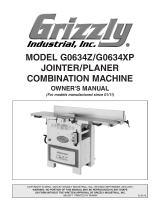 Grizzly Industrial G0634Z User manual
Grizzly Industrial G0634Z User manual
-
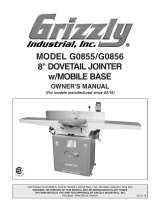 Grizzly Industrial G0856 User manual
Grizzly Industrial G0856 User manual
-
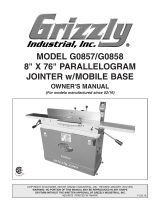 Grizzly Industrial G0857 User manual
Grizzly Industrial G0857 User manual
-
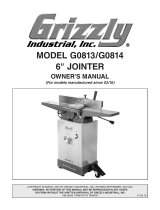 Grizzly Industrial G0813 User manual
Grizzly Industrial G0813 User manual
-
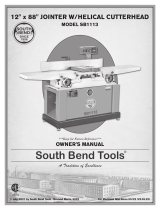 South bend SB1113 Owner's manual
South bend SB1113 Owner's manual
-
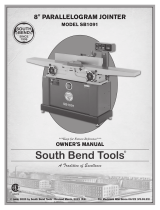 South bend SB1091 Owner's manual
South bend SB1091 Owner's manual
-
 Grizzly PRO T33307 Owner's manual
Grizzly PRO T33307 Owner's manual
-
Shop fox W1859 User manual
-
Shop fox W1754H Owner's manual
-
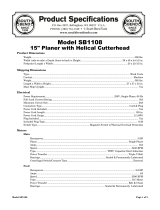 South bend SB1108 Owner's manual
South bend SB1108 Owner's manual















































































